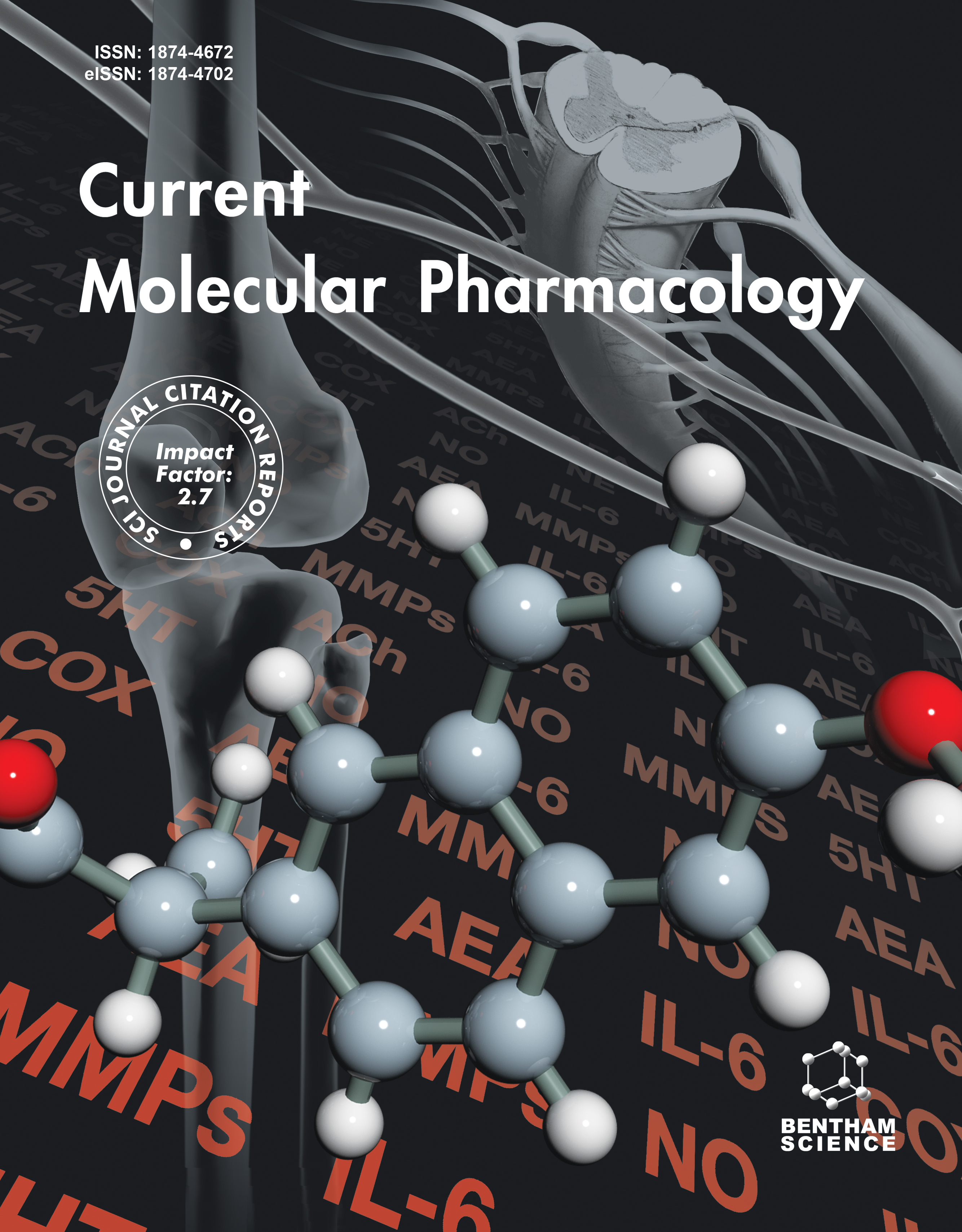- Home
- A-Z Publications
- Current Molecular Pharmacology
- Previous Issues
- Volume 15, Issue 4, 2022
Current Molecular Pharmacology - Volume 15, Issue 4, 2022
Volume 15, Issue 4, 2022
-
-
Anti-Diabetic Effects of Isolated Lipids from Natural Sources through Modulation of Angiogenesis
More LessAuthors: Soraya Sajadimajd, Mina Khosravifar and Gholamreza BahramiBackground: Aberrant angiogenesis plays a fateful role in the development of diabetes and diabetic complications. Lipids, as a diverse group of biomacromolecules, are able to relieve diabetes through the modulation of angiogenesis. Objectives: Owing to the present remarkable anti-diabetic effects with no or few side effects of lipids, the aim of this study was to assess the state-of-the-art research on anti-diabetic effects of lipi Read More
-
-
-
Pharmacological Interventions for the Prevention and Treatment of Kidney Injury Induced by Radiotherapy: Molecular Mechanisms and Clinical Perspectives
More LessMore than half of cancer patients need radiotherapy during the course of their treatment. Despite the beneficial aspects, the destructive effects of radiation beams on normal tissues lead to oxidative stress, inflammation, and cell injury. Kidneys are affected during radiotherapy of abdominal malignancies. Radiation nephropathy eventually leads to the release of factors triggering systemic inflammation. Currently, there is no p Read More
-
-
-
Obesity and Inflammation: Colorectal Cancer Engines
More LessAuthors: Lara J. Bou Malhab and Wael M. Abdel-RahmanThe prevalence of obesity continues to increase to the extent that it became a worldwide pandemic. An accumulating body of evidence has associated obesity with the development of different types of cancer, including colorectal cancer, which is a notorious disease with a high mortality rate. At the molecular level, colorectal cancer is a heterogenous disease characterized by a myriad of genetic and epigenetic alterations Read More
-
-
-
The Role of miR-129-5p in Cancer: A Novel Therapeutic Target
More LessmiRNA-129-5p belongs to the microRNA-129 (miRNA-129) family. miRNA-129-5p is expressed in many tissues and organs of the human body, and it regulates a wide range of biological functions. The abnormal expression of miRNA-129-5p is related to the occurrence and development of a variety of malignant tumors. miRNA-129-5p plays an important role in the tumorigenesis process and functions by promoting or inhibitin Read More
-
-
-
Novel Chalcone BDD-39 Mitigated Diabetic Nephropathy through the Activation of Nrf2/ARE Signaling
More LessAuthors: Temitope Adelusi, Xizhi Li, Liu Xu, Lei Du, Meng Hao, Xueyan Zhou, Apu Chowdhry, Ying Sun, Xiaoke Gu, Qian Lu and Xiaoxing YinBackground: In this study, we investigated the Nrf2/ARE signaling pathway activating capacity of Biphenyl Diester Derivative-39 (BDD-39) in diabetic nephropathy in order to elucidate the mechanism surrounding its antidiabetic potential. Objectives: Protein expressions of Nrf2, HO-1, NQO-1 and biomarkers of kidney fibrosis were executed after which mRNA levels of Nrf2, HO-1 and NQO-1 were estimated after creating the model Read More
-
-
-
Nitric Oxide Modulation as a Potential Molecular Mechanism Underlying the Protective Role of NaHS in Liver Ischemia Reperfusion Injury
More LessBackground: Liver IR is a frequent clinical complication with high morbidity and mortality. The present study evaluated the possible protective effect of sodium hydrosulfide (NaHS), a H2S donor, in IR-induced hepatic injury and explored the mechanisms of actions of the investigated drug. Methods: Male albino rats (200-230 g) were divided into the following groups: group 1:Sham-operated non treated rats, group 2: IR non t Read More
-
-
-
Impact of Sitagliptin on Non-diabetic Covid-19 Patients
More LessObjectives: In coronavirus disease 2019 (Covid-19), SARS-CoV-2 may use dipeptidyl peptidase 4 (DPP4) as an entry-point in different tissues expressing these receptors. DPP4 inhibitors (DPP4Is), also named gliptins, like sitagliptin, have anti-inflammatory and antioxidant effects, thereby lessen inflammatory and oxidative stress in diabetic Covid-19 patients. Therefore, the present study aimed to illustrate the potential ben Read More
-
-
-
Recombinant Human Regenerating Gene 4 Attenuates the Severity of Osteoarthritis by Promoting the Proliferation of Articular Chondrocyte in an Animal Model
More LessAuthors: Xue-jia Li, Fei Zhu, Bo Li, Dong Zhang and Cheng-Wei LiangIntroduction: Osteoarthritis (OA) is a dominant cause of morbidity and disability. As a chronic disease, its etiological risk factors and most therapies at present, are empirical and symptomatic. Regenerating gene 4 (Reg4) is involved in cell growth, survival, regeneration, adhesion, and resistance to apoptosis, which are partially thought to be the pathogenic mechanisms of OA. However, the proper role of Reg4 in OA is still unknow Read More
-
Most Read This Month
Article
content/journals/cmp
Journal
10
5
false
en


